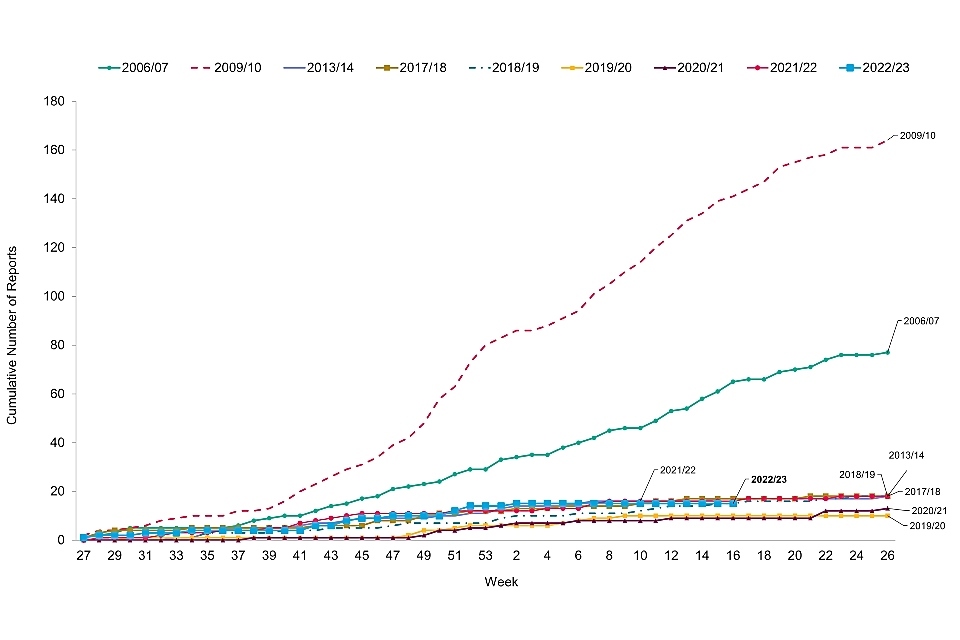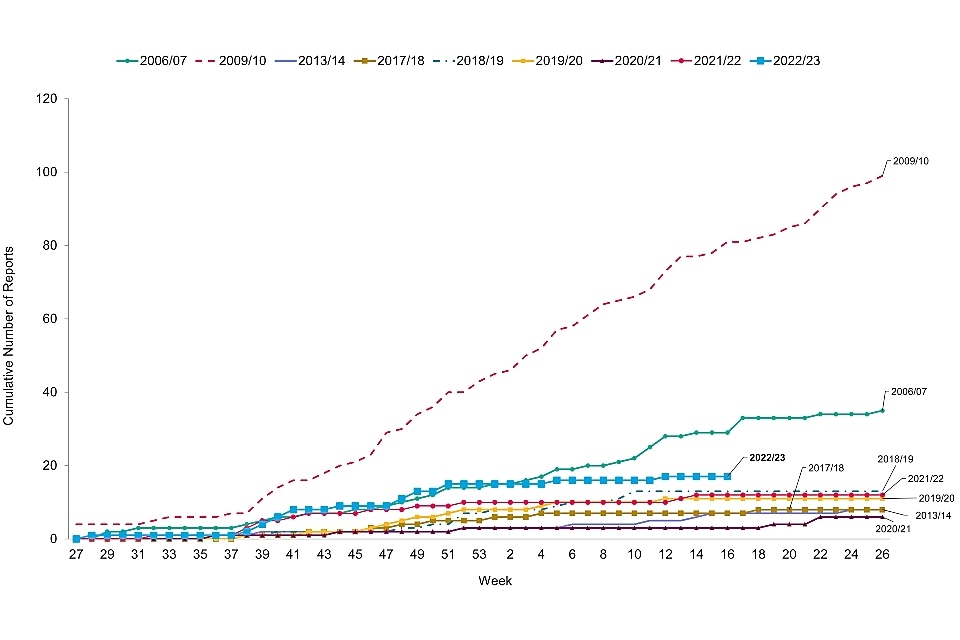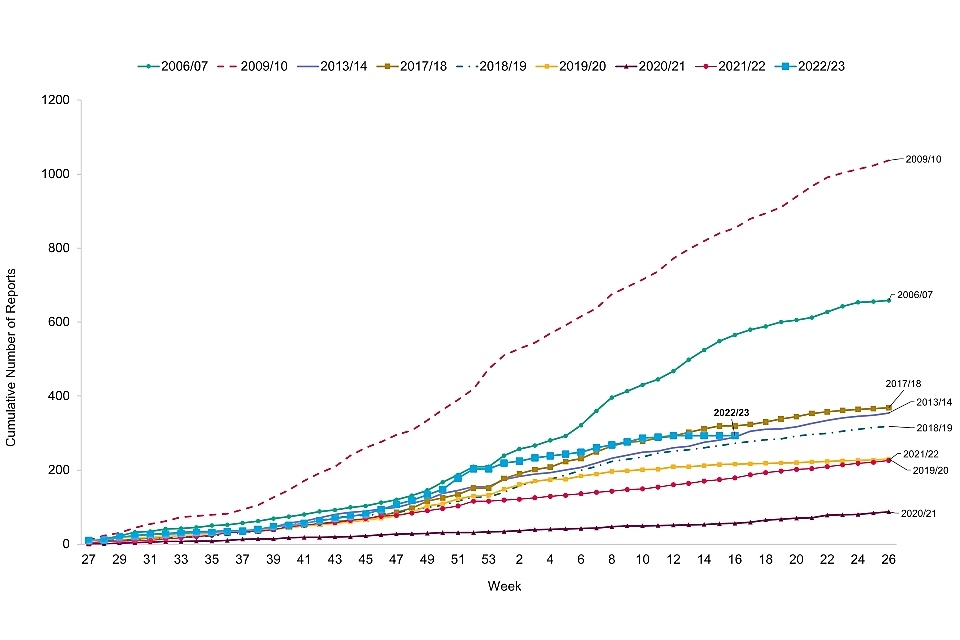[Withdrawn] Pneumococcal disease infections caused by serotypes in Prevenar 13 and not in Prevenar 7
Updated 7 July 2023
Applies to England
The number of invasive pneumococcal disease (IPD) cases due to any of the 6 serotypes in Prevenar13TM but not in the 7-valent pneumococcal conjugate vaccine (PCV7) in an epidemiological year was among the lowest in 2020 to 2021 compared to all other years. This is true for all age groups, except children aged under 2 years who experienced fewer total cases in the year 2019 to 2020.
In 2021 to 2022, the number of cases remained low in persons aged 5 years or over compared to years before the COVID-19 pandemic but remained similar in children aged under 5 years.
In 2022 to 2023, the cumulative number of cases at this time of year in children aged under 2 years is similar to previous years, except for the years most affected by the COVID-19 pandemic. In the age groups 2 to 4 years and 5 to 64 years, the number of cases in 2022 to 2023 at this time of year is higher than all previous years since 2017 to 2018, 2006 to 2007 and 2009 to 2010. However, in persons aged over 65 years, the current cumulative number of cases is higher than any year since 2018 to 2019.
The number of cases during the 2006 to 2007 epidemiological year corresponds to the year in which where Prevenar 7TM was implemented in the childhood immunisation schedule (September 2006).
The number of cases in 2009 to 2010 and 2013 to 2014 epidemiological years corresponds to the year in which Prevenar 13TM was implemented (April 2010) and 4 years after implementation, respectively.

Figure 1. Cumulative weekly number of reports of Invasive Pneumococcal Disease due to any of the serotypes in Prevenar13™ but not in PCV7: children aged under 2 years in England by epidemiological year, from July to June (selected years and 2017 to 2018 to date)

Figure 2. Cumulative weekly number of reports of Invasive Pneumococcal Disease due to any serotype in Prevenar13™ but not in PCV7: children aged 2 to 4 years in England by epidemiological year, from July to June (selected years and 2017 to 2018 to date)

Figure 3. Cumulative weekly number of reports of Invasive Pneumococcal Disease due to any of the serotypes in Prevenar13™ but not in PCV7: persons aged 5 to 64 years in England by epidemiological year, from July to June (selected years and 2017 to 2018 to date)

Figure 4. Cumulative weekly number of reports of Invasive Pneumococcal Disease due to any of the serotypes in Prevenar13™ but not in PCV7: persons aged 65 years and over in England by epidemiological year, from July to June (selected years and 2017 to 2018 to date)
Source: Immunisation and Vaccine Preventable Diseases Division, UK Health Security Agency (UKHSA, formerly Public Health England).
The 4 line graphs above are based on week of isolation, therefore numbers for most recent weeks may not be complete. Numbers of reports of serotyped cases shown in the graph are not adjusted to account for any change that may have occurred over time and between age groups in the proportion of all IPD cases that are serotyped.
The PCV7 was introduced into the childhood immunisation schedule on 4 September 2006, which corresponds with week 36 above.
The 13-valent pneumococcal conjugate vaccine (PCV13) was introduced into the childhood immunisation schedule on 1 April 2010, which corresponds with week 13 above. The vaccine schedule for this vaccine changed for infants born on or after January 2020 (with doses given at 12 weeks and one year of age (1+1) instead of 8 weeks, 16 weeks and one year of age (2+1)), which corresponds with week 0 above.
